
The United States Military Academy (USMA), also known as West Point, Army, Army West Point, The Academy, or simply The Point, is a four-year federal service academy in West Point, New York. It was originally established as a fort that sits on strategic high ground overlooking the Hudson River with a scenic view, 50 miles (80 km) north of New York City. It is the oldest of the five American service academies and educates cadets for commissioning into the United States Army.

The United States Air Force Academy is a military academy for officer cadets of the United States Air Force and United States Space Force immediately north of Colorado Springs, Colorado. It is the youngest of the five United States service academies, having graduated its first class 62 years ago in 1959, but is the third in seniority. Graduates of the academy's four-year program receive a Bachelor of Science degree and are commissioned as second lieutenants in the U.S. Air Force or U.S. Space Force. The academy is also one of the largest tourist attractions in Colorado, attracting approximately a million visitors each year.

Bunker Hill is a city in Macoupin County, Illinois, United States. The population was 1,774 at the 2010 census.

Massanutten Military Academy (MMA) is a coeducational military school for grades 5 through 12 and one academic postgraduate year, located in Woodstock, Virginia, United States.

The Citadel, The Military College of South Carolina, commonly known simply as The Citadel, is a military college in Charleston, South Carolina. Established in 1842, it is one of six United States senior military colleges. It has 18 academic departments divided into five schools offering 23 majors and 38 minors. The military program is made up of cadets pursuing bachelor's degrees who live on campus. The non-military programs offer 12 undergraduate degrees, 26 graduate degrees, as well as evening and online programs with seven online graduate degrees, three online undergraduate degrees, and three certificate programs.
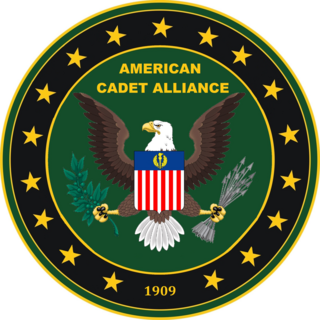
The American Cadet Alliance (ACA), formerly the United States Army Cadet Corps (USAC) was founded under the name "Colonel Cody's Boy Scouts" by Captain James H. C. Smyth at the First Presbyterian Church, Manhattan, New York in 1909. The ACA is the oldest nationwide Cadet program in the United States. It is the National Cadet Program branch of the American Military Cadet Corps (AMCC), its parent organization. ACA and American Military Cadet Corps is an Independent National Cadet Program and therefore is not a governmental agency, and is not an official entity of the United States Army.
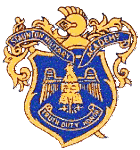
Staunton Military Academy was a private all-male military school located in Staunton, Virginia. Founded in 1884, the academy closed in 1976. The school was highly regarded for its academic and military programs, and many notable American political and military leaders are graduates, including 1964 presidential candidate Sen. Barry Goldwater, 1960's folk singer Phil Ochs, and John Dean, a White House Counsel who was a central figure in the Watergate scandal of the early 1970s.
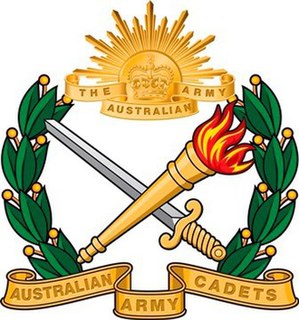
The Australian Army Cadets (AAC) is the youth military program and organisation of the Australian Army, tasked with supporting participants to contribute to society, fostering interest in Defence Force careers, and developing support for the Force. The program has more than 19,000 Army Cadets between the ages of 12 and 20 based in more than 200 units around Australia. The values of the AAC are "Service, Courage, Respect, Integrity and Excellence".
Wentworth Military Academy and College was a private two-year military college and high school in Lexington, Missouri. Wentworth was one of five military junior colleges in the United States. The institution was founded in 1880 and closed in 2017.

The Turkish Military Academy is a four-year co-educational military academy and part of the National Defence University. It is located in the center of Ankara, Turkey. Its mission is to develop cadets mentally and physically for service as commissioned officers in the Turkish Army.
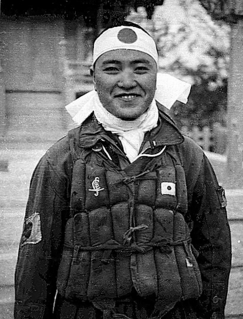
Kiyoshi Ogawa was a Japanese naval aviator ensign (少尉) of the Imperial Japanese Navy during World War II. As a kamikaze pilot, Ensign Ogawa's final action took place on May 11, 1945, during the Battle of Okinawa. Piloting a bomb-laden Mitsubishi Zero fighter during Operation Kikusui No. 6, Ogawa flew through American anti-aircraft fire and attacked the U.S. Navy aircraft carrier USS Bunker Hill, less than one minute after his flight leader, sub-lieutenant Seizō Yasunori, crashed into the ship. He dropped a 250-kilogram (550 lb) bomb, never pulled out of the dive, and crashed deliberately into the flight deck near the control tower of the aircraft carrier. The bomb penetrated Bunker Hill's flight deck and exploded. Gasoline fires flamed up and several explosions took place when re-armed and re-fueled planes on deck exploded and caught fire. 393 American sailors died with Yasunori and Ogawa, 264 were wounded, and the ship was disabled for the remainder of the war.

The Mürwik Naval School is the main training establishment for all German Navy officers and replaced the German Imperial Naval Academy in Kiel.

Royal Swedish Naval Academy was a school for officer training for the Swedish Navy, which operated in various forms between the years 1756 and 1987.
Tualatin Academy was a secondary school in the U.S. state of Oregon that eventually became Pacific University. Tualatin Academy also refers to the National Register of Historic Places-listed college building constructed in 1850 to house the academy, also known as Old College Hall. The building now serves as the Pacific University Museum, and is one of the oldest collegiate buildings in the western United States.

The East India Company Military Seminary was a British military academy at Addiscombe, Surrey, in what is now the London Borough of Croydon. It opened in 1809 and closed in 1861. Its purpose was to train young officers to serve in the East India Company’s private army in India.

A Cadet Honor Code is a system of ethics or code of conduct applying to military cadets studying at military academies. In the United States, these codes exist at the Federal Service Academies, such as the United States Military Academy and the United States Air Force Academy and at the Senior Military Colleges, as well as other military schools and colleges. The United States Naval Academy and United States Coast Guard Academy have a related standard, known as the Honor Concept.
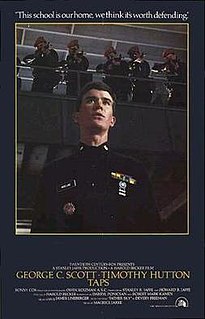
Taps is a 1981 American drama film starring George C. Scott and Timothy Hutton, with Ronny Cox, Tom Cruise, Sean Penn, and Evan Handler in supporting roles. Hutton was nominated for a Golden Globe award in 1982. The film was directed by Harold Becker from a screenplay by Robert Mark Kamen, James Lineberger, and Darryl Ponicsan, based on Devery Freeman's 1979 novel Father Sky. The original music score was composed by Maurice Jarre. It was filmed at Valley Forge Military Academy and College.

The Junior Reserve Officers' Training Corps is a federal program sponsored by the United States Armed Forces in high schools and also in some middle schools across the United States and United States military bases across the world. The program was originally created as part of the National Defense Act of 1916 and later expanded under the 1964 ROTC Vitalization Act.
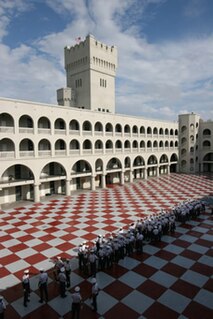
The History of The Citadel began in the early 1800s with the establishment of state arsenals in Charleston, South Carolina and Columbia, South Carolina. These arsenals would come to be military schools comprising the South Carolina Military Academy. Playing a key role in South Carolina's efforts during the Civil War, the college gained a reputation for military discipline and rigor. After the Civil War, only the Charleston location reopened, known as The Citadel Academy. Renamed in 1910 as The Citadel, the school's academic reputation grew, even as larger colleges within the state and region competed for resources and students. After moving to a new campus near Hampton Park in 1922, the college has grown substantially, integrating minorities in the 1960s and women in the 1990s, and producing many military officers, business, and political leaders throughout its history.
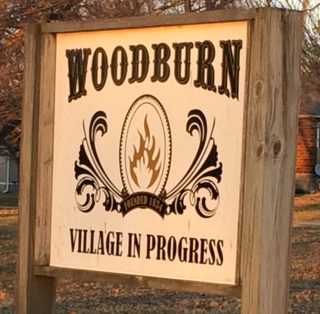
Woodburn is an unincorporated community in Bunker Hill Township, Macoupin County, Illinois, United States.


















